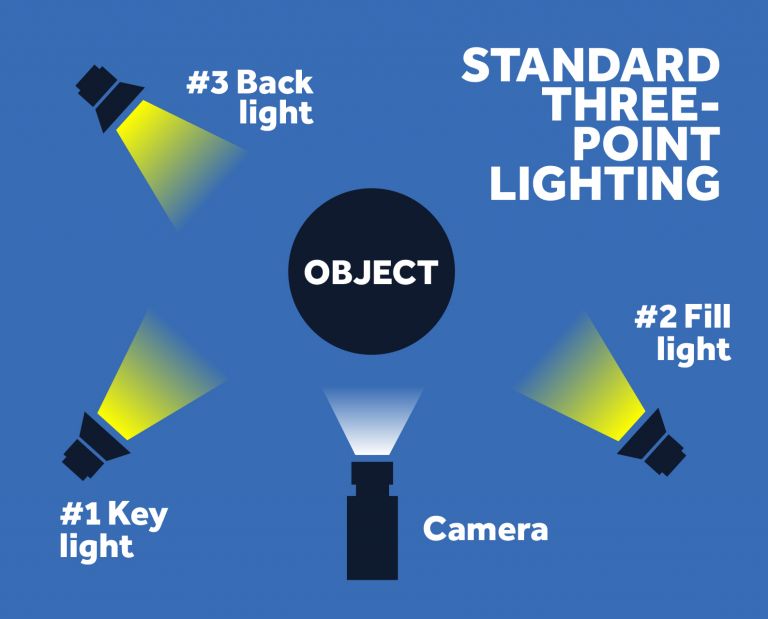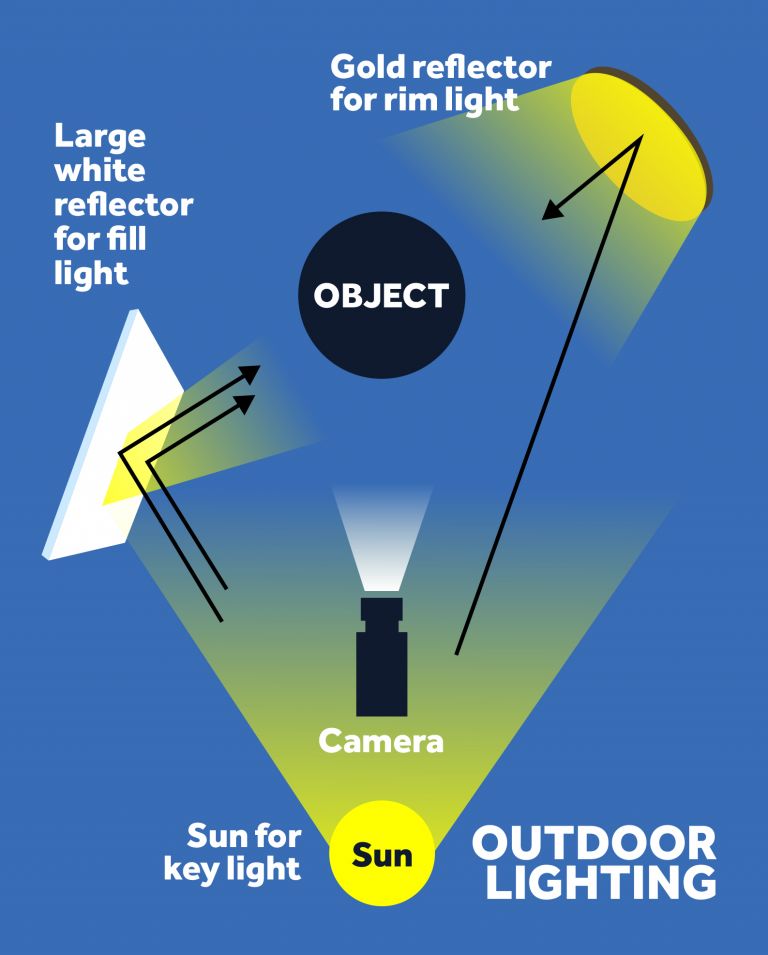If you’re going to film a video, you need it to look good, and that means you’ll need lights. In fact, good lighting is one of the most important elements to filming a great video, potentially even more important than your camera setup. After all, there’s plenty you can do with a budget camera, or even your phone, but if you’re trying to shoot a video in the dark, it ain’t gonna happen.
The right lighting helps to set the mood and tone, creates a flattering shot, and helps ensure your viewers can actually see what you want them to.
So how do you work out what sort of video lighting kit you’ll need? There are lots of options, and lots of confusing terminology around different types of lights, wattages, color temperature, bulbs, gels, filters, and more.
In this guide, we’ll walk you through how to light a scene and share some good video lighting kit options for every budget.
Video Lighting Setups
For most scenarios, including vlogging, corporate videos, and interviews, one of these three lighting setups will be your best bet. There are other ways to light a scene, but these are generally used for more artistic or cinematic filmmaking.
Two or three-point lighting
A three-point lighting setup is the standard for most basic filming. As the name suggests, it’s accomplished using three lights:
Key light: The key light is the strongest, providing most of the light in the shot. It’s generally placed in front of your subject, around 45-degrees above and 45-degrees to the right or left.
Fill light: This is a softer light, used to fill in shadows on the subject’s face. It should be positioned to the side, opposite the key light. The intensity of the fill light is usually around half that of the key light.
Back light: The back light (sometimes called a rim light) creates depth and provides a soft glow in the background. It’s placed above and behind the subject (out of the shot).

If you’re just getting started with lighting or have a limited budget, you can get by with a two-point setup that uses just the key and fill lights. While the back light adds a nice depth to your background, it’s not necessarily essential.
Natural outdoor lighting
If you’re shooting outdoors or in a space with very large windows, you can use the sun’s natural light to illuminate your scene. Photographers and filmmakers love the “golden hour” in early morning and late evening for its soft and flattering golden light.
There are drawbacks to relying on natural light however. The sun can be too intense, casting harsh shadows on your subject. It also moves and changes in intensity as the weather shifts and clouds pass overhead. All of these can affect the light and color quality and make it difficult to achieve consistency in your shots.
But, with careful planning and adjustments as needed, you can certainly use natural light sources for your videos.
Many video makers who use natural light like to use a variation on the three-point lighting setup described above. You can place your subject so the sun provides your key light, with reflectors to provide fill and back lights.
During the golden hour, when light is softer, the subject can also be positioned in front of the sun, using it as a back light, with reflectors providing the key and fill lights (you’ve just got to be quick before the light changes too much).

How to light a scene
Along with the lighting setups above, you’ll want to keep a few things in mind.
Soft vs. hard light
As a rule, you want diffused, soft light, like on an overcast day. The softer the light, the more flattering it is. In general, the smaller the light source, such as the sun on a cloudless day, the sharper the shadows it casts, or the harder it is. Soft light is created with larger light sources.
Diffusing a light source by shining it through a semi-transparent material (like a white sheet) or reflecting it by pointing it at a large reflective surface helps soften harder light.
Positioning lights
Lights should be positioned slightly above and to the side of the subject, as outlined above. Never position lights below the subject (unless you’re going for a spooky ghost story effect) and avoid shooting directly under overhead lighting.
While it’s possible to use light from a window as a source, the results can be inconsistent, so many video makers prefer to use blackout shades or film in a windowless room so they have complete control over ambient light.
Video lighting on a budget
When it comes to lighting, the good news is that there are plenty of affordable all-in-one kits with everything you need. For a basic YouTube video lighting setup or other amateur videos, these under-$100 kits are perfectly effective. Most include CFL bulbs, which output a soft, cool light.
Fancierstudio’s three-point lighting kit is a good, under-$50 option, and includes translucent umbrellas to help diffuse the light, plus stands, CFL bulbs, and a case.
At around $50, LimoStudio’s Continuous Lighting Kit is a bargain too, with three lights, stands, CFL bulbs, umbrellas, and more.
An affordable entry into LED lighting options, Neweer’s Studio Lighting Kit includes two dimmable 160-LED light panels with stands, filters, and batteries. LED lights are an energy efficient, long-lasting, lightweight option that, like CFLs, provide soft, cool-toned lighting.
If you want more control in directing your light, a lighting kit with barn doors (the shades around the edges of the light) like this LED set from Limostudio is a good option. These allow you to shape and focus your light, and create more dramatic lighting effects.
If you prefer the diffused light that softboxes provide, this $99 lighting kit from StudioPro is a well-reviewed option for a two-point setup.
Video lighting kits for mid-range budgets
If your budget’s a little larger, these $100-$500 kits offer even more features, durability, and control for lighting your videos.
For a three-point softbox setup, StudioFX’s kit is good choice, with three lights, adjustable stands with boom arm, fluorescent daylight bulbs, and a carrying bag, for around $125.
A favorite of beauty and makeup vloggers, ring or “Diva” lights create an incredibly flattering shot thanks to the huge bulb. This $280 kit from Lume Cube gives you an 18” edge lit LED ring light to create on the go with the built-in battery or to use with continuous power.
A higher-end LED panel option, this kit from GVM includes three LED panels, remote control, and a heap of other features. The panels are dimmable and the color temperature can be adjusted cooler or warmer, depending on your needs.
Video lighting kits for high budgets
For professional video production and filmmaking, you may very well be building your own kit and hand-selecting the lights, stands, filters, and other equipment yourself, based on your needs. But if you’re after an all-in-one kit, there are a number of high-end options out there too.
This kit from Arri includes three 650-watt Tungsten lights, colored filters, and barn doors to control and diffuse light output, a wheeled case, stands, and more.
Remember, no matter what kind of videos you’re making, good lighting is essential. Learning the basics of lighting a scene and acquiring a set of lights is the difference between a video that looks amateur and unflattering, and one that looks polished and professional. Frankly, you’ll look woefully amateurish if you ignore this aspect of making a video.

